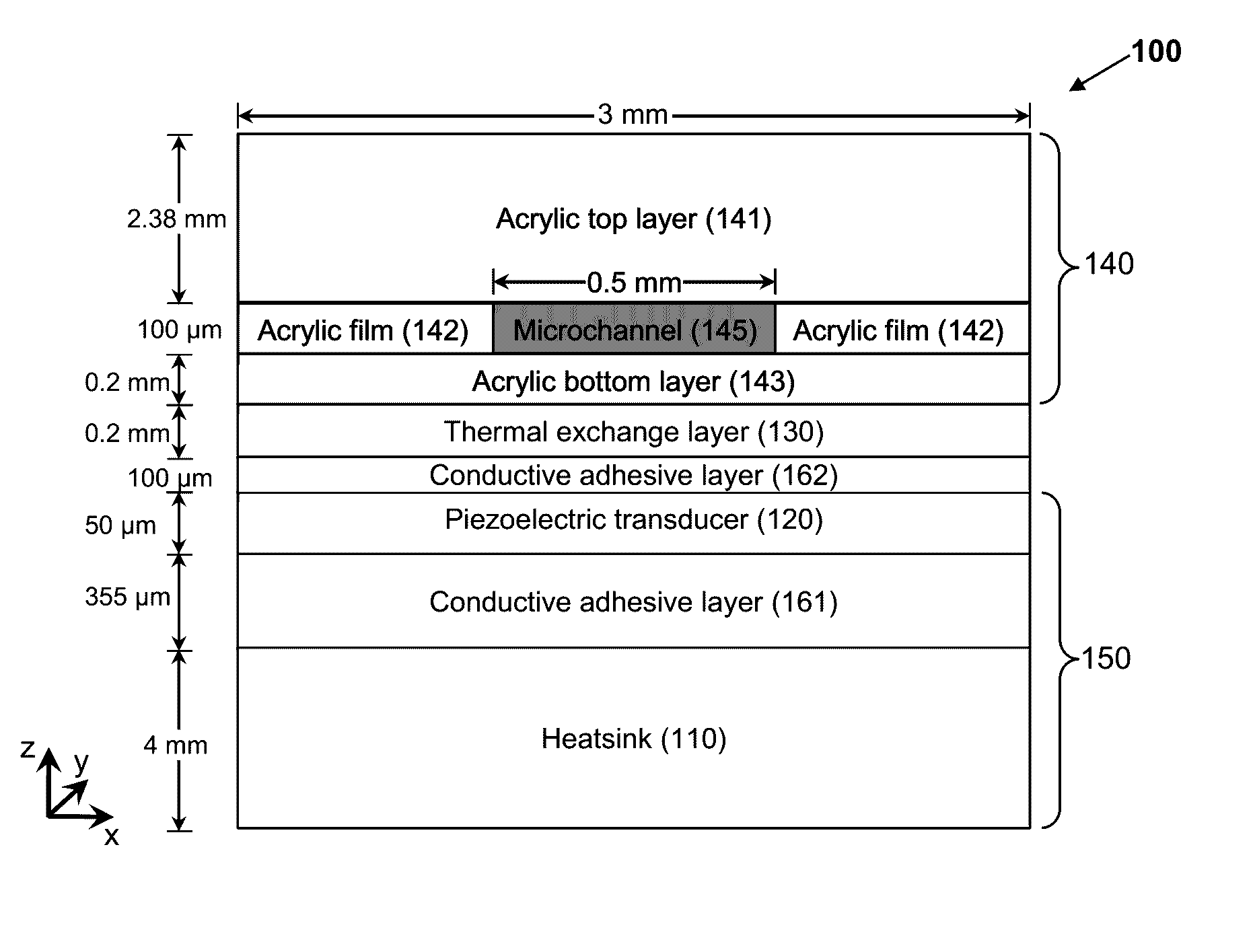Miniature acoustic wave lysis system and uses thereof
a lysis system and acoustic wave technology, applied in the field of biological cell lysis, can solve problems such as special relevance limitations, and achieve the effects of reducing sample loss, small volume processing, and better handling on the chip
- Summary
- Abstract
- Description
- Claims
- Application Information
AI Technical Summary
Benefits of technology
Problems solved by technology
Method used
Image
Examples
example 1
Acoustic Lysis System Having a Thermal Exchange Layer
[0167]When performing biological assays, heating must be controlled in order to preserve the biologically relevant conformation of DNA and proteins. For instance, uncontrolled heating can result in loss of secondary, tertiary, and / or quaternary structure. Here, we describe an acoustic lysis system adapted to minimize sample heating. This system includes a thermal exchange layer disposed between the sample and the transducer array, as well as a heatsink on the bottom side of the transducer array to further conduct heat away from the sample.
[0168]FIG. 2 provides an exemplary lysis system 100 including a cartridge 140 and a transducer 120. As described herein, the system of the invention can include an array of a plurality of elements. For instance, the system can include a cartridge having a fluidic array that includes a plurality of channels, as well as a platform having a transducer array that includes a plurality of acoustic tran...
example 2
Acoustic Lysis System for DNA Extraction and Detection
[0174]The acoustic lysis system of the invention can include any number of components to facilitate detection. For instance, DNA detection from a whole cell sample requires sample injection, cell lysis, as well as DNA extraction. Described herein is a system including a manifold to facilitate sample injection, a thermal exchange layer to minimize sample heating during lysis, and a filter layer to capture the target DNA. Also described are valve configurations that minimize DNA loss.
[0175]The cartridge for cell lysis and DNA extraction can be a multilayered device composed of various composite layers. FIG. 3A-3B provides a composite cartridge composed of six layers: a plastic acoustic coupling layer 243, two microchannel fluid layers 241, 242, two filter layers 260, 261, and an o-ring layer having fluid ports 270. The device can include one or more capping layers above the o-ring layer. The layers are bonded together to form a sin...
example 3
Platform Having a Transducer Array
[0182]The transducer array can be adapted to be coupled reversibly to the cartridge (e.g., any described herein). In addition, the individual transducer elements in the array can be designed with any useful configuration. Described herein is a configuration in which each transducer element is disposed under one and only one channel. In this manner, each transducer can be individually controlled, and only one transducer can be activated to initiate lysing in one channel.
[0183]To achieve a much denser package, the transducers were configured as separate channels each capable of lysing. In FIG. 5A, each of the five-channel transducer elements defines one acoustic emitter capable of several power settings ranging from gentle mixing to cell membrane lysis. The acoustic transducer was fabricated from a gold (0.5 μm), 36°YX lithium niobate (50 μm), and gold (0.5 μm) film stack. Then, the stack was bonded onto a fused silica / aluminum nitride substrate litho...
PUM
 Login to View More
Login to View More Abstract
Description
Claims
Application Information
 Login to View More
Login to View More - R&D
- Intellectual Property
- Life Sciences
- Materials
- Tech Scout
- Unparalleled Data Quality
- Higher Quality Content
- 60% Fewer Hallucinations
Browse by: Latest US Patents, China's latest patents, Technical Efficacy Thesaurus, Application Domain, Technology Topic, Popular Technical Reports.
© 2025 PatSnap. All rights reserved.Legal|Privacy policy|Modern Slavery Act Transparency Statement|Sitemap|About US| Contact US: help@patsnap.com



